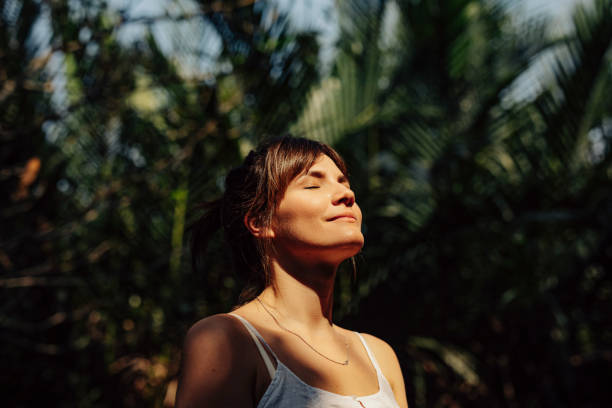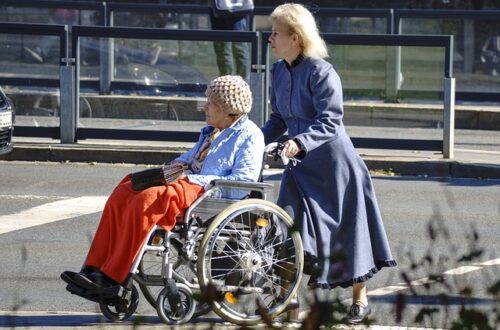
Challenges to Following Your Bliss
“Follow your bliss, and the universe will open doors for you where there were only walls.”—Joseph Campbell.
Joseph Campbell, author of The Power of Myth, is most famous for the well-known advice to “follow your bliss,” which is a call to pursue what brings us the greatest joy and satisfaction.
“Bliss” and “Happiness” are related but have nuanced differences.
Bliss: This term often refers to perfect joy and contentment with an almost transcendent or euphoric quality. It implies a higher degree of emotional and spiritual fulfillment than general happiness.
For example, one might say, “She was in a state of bliss after the meditation retreat.”
Happiness: Happiness is a broader term that denotes a state of well-being and contentment. It can encompass many positive emotions influenced by external circumstances and personal experiences. For example, one might say, “She felt happiest spending time with her family.
While both words relate to positive emotional states, “bliss” suggests a more intense, elevated form of joy than the more general and sometimes experienced “happiness.”
I enjoyed Dr. Wayne Dyer’s description of the pursuit of happiness as a journey in his book Pulling Your Own Strings:
“Instead, wake up and appreciate everything you encounter along your path. Enjoy the flowers that are there for your pleasure. Tune in to the sunrise, the little children, the laughter, the rain, and the birds.
“Drink it all in, rather than waiting to get to some always-future point where it will be all right for you to relax.
“Indeed, success—even life itself—is nothing more than moments to enjoy, one at a time. When you understand this principle, you will stop evaluating your happiness on the basis of achievements, and instead look upon the whole trip of life as something to be happy about.”
“Or, to sum up, there is no way to happiness, because happiness is the way.”
Happiness, bliss, happiness, bliss!
In this article, I will discuss seven (7) challenges older women face when pursuing their passions or “following their bliss.”
These challenges can be multifaceted and influenced by social, economic, and personal factors.
Challenge No. 1: Ageism and Stereotypes
Society often holds ageist attitudes that can undermine the confidence of older women and limit their opportunities.
There is a stereotype that older women “slow down” or are less capable of embracing new ventures or passions.
Ageism is discrimination, prejudice, or stereotyping based on a person’s age.
Ageism can manifest in various forms, such as:
- Employment: Older women may face hiring, promotion, or job retention discrimination. Some assumptions and fears hold mature women back in their careers: older women lack dedication and are less productive. Thus, ageism and gender stereotyping are a double whammy for women.
- Healthcare: Older women might receive inadequate medical treatment or be dismissed on age-related assumptions rather than individual health conditions.
- Social Attitudes: Negative stereotypes about aging can lead to social exclusion or marginalization of older women.
- Media Representation: Ageism can be perpetuated through media that portray older women negatively or stereotypically.
Ageism can affect people of all ages but is mainly directed at older adults, especially women.
Ageism contributes to societal attitudes that undervalue or ignore contributions and individuals’ needs based on age.
Addressing ageism involves promoting age diversity, challenging stereotypes, and ensuring equal opportunities and treatment for older women.
Challenge No. 2: Health Concerns
As people age, health issues can become more prevalent, potentially limiting physical activities and the ability to travel.
Chronic illnesses, mobility issues, or the need for regular medical care can pose significant barriers.
Statistics for Older Women:
- Heart Disease: More women die of heart disease than any other condition. By age 70, women are at the same risk of heart disease as men.
- Cancer: About one in five women over age 65 are affected by some cancer. Cancer is the second-leading cause of death for senior women.
- Stroke: Stroke is the third leading cause of death for American women.
- Diabetes: About one in nine women in the United States have diabetes. Women with diabetes have a higher risk of heart disease, blindness, and depression than men do.
- Alzheimer’s Disease: About one in nine adults over the age of 65 have Alzheimer’s disease, and women are twice as likely to get it than men.
- Depression: Twice as many senior women are affected by depression than men.
- Arthritis: More than half of all seniors over age 65 have arthritis, and women are more prone to it than men.
- Obesity: Nearly 41 percent of women between the ages of 65 and 74 are considered obese, putting them at risk of several diseases.
(Source: https://belevederehealthservices.com)
Know when to pause.
Addressing health concerns with the help of healthcare professionals can significantly improve the quality of life for older women.
Health concerns do not necessarily have to prevent mature women from following their bliss!
With proper management, adaptation, and support, pursuing passions supporting overall health and well-being is possible.
Challenge No. 3: Caregiving Responsibilities
Many older women take on the caregiving roles for spouses, aging parents, or grandchildren.
These responsibilities can consume time and energy, leaving little room for personal pursuits.
Need help?
I recommend a book I published 2019: A Family Caregiver’s Guide: 7 Secrets to Replace Negative Triggers with Positive Emotions.
You can find my book here: https://www.amazon.com/dp/B0CFPHPPNR
Within the pages of this book, you will discover how to:
- Identify your current state of emotion (and emotional triggers)
- Create a deliberate positive emotional state
- Free yourself from automatic negative thoughts (ANTs)
- Prevent family miscommunication and manage conflict
- Boost your physical, mental, financial, and emotional well-being
- Choose to act the love
- Plan your post-caregiving future/find your life purpose
As an experienced caregiving wife, caring for my husband 24/7 for 3 ½ years, and a health wellness writer, I provide advice and guidance to support women seeking to improve their overall well-being and lead healthier lives.
The goal: To help caregiving wives go from feeling a duty to devotion in caring for their loved ones.
Again, you can find my book here: https://www.amazon.com/dp/B0CFPHPPNR
Challenge No. 4: Lack of Support
Support systems may diminish with age due to losing friends, spouses, or children moving away.
A strong support network is often crucial for pursuing new interests and adventures.
Here are some key reasons support systems diminish with age:
- Loss of Friends and Family: As people age, they may experience the loss of friends, spouses, and other family members due to illness or death, which can lead to a shrinking social circle and reduced emotional support.
- Health Issues: Health problems can limit mobility and ability to participate in social activities, resulting in social isolation and fewer opportunities to maintain or build support networks.
- Retirement: Leaving the workforce can reduce daily social interactions and the sense of community that work provides, leading to decreased social support from colleagues and work-related networks.
- Changes in Family Dynamics: Adult children and other family members may have their own responsibilities and may not be able to provide the same level of support they did when they were younger, which can leave older adults feeling less supported.
- Technological Barriers: Older adults may find it difficult to adapt to new technologies that facilitate social connection, such as social media and video calls, thus limiting their ability to stay connected with friends and family who use these tools.
Challenge No. 5: Self-Doubt and Confidence Issues
Years of societal expectations and potential undervaluation can lead to self-doubt.
Older women might question their abilities or feel it is “too late” to start something new.
Overcoming self-doubt is a process that involves both internal and external strategies.
Here are a few practical steps to help you combat self-doubt and build confidence.
Internal Strategies
- Identify the Source:
Understand where your self-doubt is coming from. Is it past failures, fear of judgment, or negative self-talk? Identifying the root cause can help address it more effectively.
- Challenge Negative Thoughts:
When you notice negative thoughts, challenge them. Ask yourself if there’s evidence to support your thoughts or if they are irrational fears. Replace negative thoughts with positive affirmations.
- Practice Self-Compassion:
Be kind to yourself. Treat yourself with the compassion you would offer a friend in a similar situation. Acknowledge that everyone makes mistakes and part of the learning process.
- Set Realistic Goals:
Break down your goals into small, manageable steps. Achieving these small steps can boost your confidence.
- Celebrate your achievements.
External Strategies
- Seek support:
Surround yourself with supportive and positive people who believe in you. Share your doubts with trusted friends or family members who can offer encouragement and perspective.
- Learn and Improve:
Identify areas where you feel inadequate and seek to improve them through learning and practice. Building skills and knowledge can significantly reduce self-doubt.
- Professional Help:
Consider seeking help from a therapist or counselor. They can provide strategies and tools to manage self-doubt and underlying issues that contribute to it.
- Take Action:
Sometimes, the best way to overcome self-doubt is to take action despite it. Procrastination can fuel doubt, whereas taking steps forward can diminish it.
- Limit Comparisons:
Avoid comparing yourself to others. Everyone has their unique path, and comparisons can often lead to unnecessary self-doubt.
Challenge No 6: Limited Opportunities
Fewer opportunities might be tailored explicitly for older women regarding educational programs, travel groups, or entrepreneurial support.
There are many brilliant older women out there.
But every day, mature women fill low-wage jobs where they mostly have no status and little to no authority or power.
Why?
“Many middle-aged or older women I know are doing the work of raising the next generation while simultaneously caring for aging parents and often holding down one or more jobs at the same time.
“These are my role models as I age—the mothers, the nurses, the teachers, the carers and the many of us who combine two or more of the above roles at once, all the while keeping a smile on our faces, a spring in our steps and not dyeing our hair for anyone.”—Alice Gwinnell.
And for the most part, older women are not acknowledged and celebrated as they should be.
“The social expectation for older women is that we will dye our hair as it greys, continue to shave our body hair, dress becomingly, not allow ourselves to retain the fat that our bodies often lean towards in midlife and generally present ourselves as men would like to view us, even as we become invisible to them.”—Angela Sainai.
Ageism is alive and well in some respects.
But in many ways, as I see it, “Older Women are Running the World!”
If you are an older woman reading this article, I encourage you not to feel limited in any way.
If you have a passion, then I encourage you to get out there and pursue it!!
Older women have many opportunities to pursue fulfilling careers, hobbies, and activities.
Here are some career opportunities:
- Consulting and Freelancing: Offer consulting services in your field of expertise. Freelancing in writing, graphic design, or marketing allows for flexible schedules.
- Education and Training: Teaching at local community colleges or offering online courses. Mentoring or coaching younger professionals in their industry.
- Nonprofit and Volunteer Work: Many nonprofits value the experience and skills of older volunteers for various roles, including leadership positions. Volunteer work can also lead to paid positions within these organizations if desired.
- Entrepreneurship: Starting a small business based on a passion or hobby, such as crafts, baking, or consulting.
- Part-Time or Flexible Jobs: Retail positions that align with personal interests, especially in specialty shops. Administrative or clerical work that can offer flexibility and part-time hours.
Age should not limit you.
Challenge No. 7: Cultural Expectations
In some cultures, older women are expected to conform to traditional roles, which can inhibit their ability to pursue individual passions.
Cultural expectations for older women can vary significantly depending on the region, society, and specific cultural context.
However, several common themes and expectations tend to surface across different cultures:
Family Roles and Responsibilities
Caregiving: Older women are often expected to care for their grandchildren, elderly parents, or other family members. Many view caregiving as a continuation of their nurturing duties from earlier in life.
Social Engagement
Community Involvement: Older women are frequently expected to be active participants in their communities, which involves volunteering, participating in religious or social groups, and contributing to community events and activities.
Economic Roles
Financial Support: In some cultures, older women are expected to contribute financially to their families through continued employment and managing household finances.
Stereotypes and Challenges
Ageism and Gender bias: Older women can face significant stereotypes and discrimination based on their age and gender. They may be perceived as less capable or less relevant, facing challenges in both professional and social settings.
While cultural expectations for older women are deeply rooted in tradition, they are also evolving.
Societal changes, increased awareness of gender issues, and the promotion of active aging are gradually reshaping the roles and expectations of older women, allowing them to lead more varied and fulfilling lives.
***** *****
So, there you have it!
Do you have an expertise, burning passion, or gift that you desire to share with the world but hesitate to do so because you lack the confidence to do so?
Why?
Could it be a fear of rejection or criticism?
Do you lack self-confidence?
What about perfectionism?
Perhaps sharing your gifts can feel like exposing a part of yourself, which can be intimidating.
Maybe you are not following your bliss due to feelings of inadequacy or the belief that you are not as capable as others perceive you, which can lead to self-doubt and to having impostor syndrome.
If you experience these negative feelings, remember the wise words of Joseph Campbell:
“If you do follow your bliss, you put yourself on a kind of track that has been there all the while, waiting for you, and the life that you ought to be living is the one you are living. Follow you bliss and don’t be afraid. And doors will open where you didn’t know they were going to be.”
Now go out there and Follow Your Bliss!
Begin now!!
Key Takeaways
- Joseph Cambell (1904-1987), an American writer and author of The Power of Myth, left the world his most famous advice: to “follow your bliss.”
- While bliss and happiness are related, “bliss” refers to perfect joy and contentment.
- Older women often face unique challenges when pursuing their passion or “following their bliss.”
- As discussed in this article, the challenges for older women are multifaceted and include ageism, health concerns, caregiving responsibilities, lack of support, self-doubt, limited opportunities, and cultural expectations.
- Some older women hesitate to share their gifts with others because they fear rejection, lack of self-confidence, perfectionism, and vulnerability, among other reasons.
“We must be willing to let go of the life we planned so as to have the life that is waiting for us.”—Joseph Cambell.




